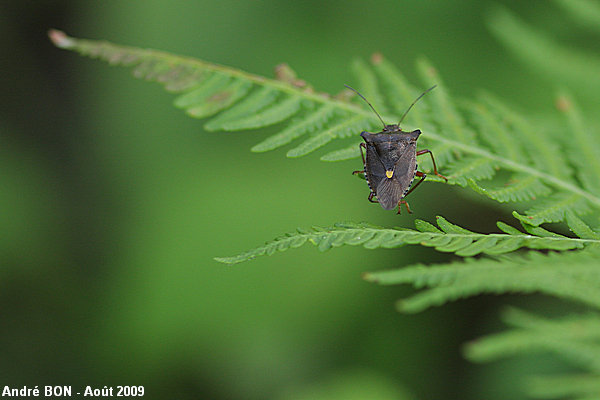


| Forest Bug (Pentatoma rufipes (Linnaeus, 1758)) |



|
|
Scientific name: Pentatoma rufipes (Linnaeus, 1758) Common name: Forest Bug Other names: Other scientific name: Tropicoris rufipes. French name: Punaise des bois, Punaise à pattes rousses. Order: Heteroptera Family: Pentatomidae Wingspan : 13-16 mm. Biotope: Forests, woodland edges, orchards, parks. Geographic area: Worldwide, missing in the extreme north and extreme south in Europe. Observation period : Mai to October. |
The Forest Bug main typical characteristics are truncated extending plates on the front angles of the pronotum. The main colour of this bug is dark brown. The scutellum ends with an orange-yellow pointed mark. The legs are orange. It feeds on plant juice (fruits and sap) and sometimes on dead insects. It can be a pest for fruit trees. Females lay the eggs in summer in the crevice of tree bark. The Forest Bug over winters as a young larva. |
| [To know more about the Forest Bug] [Next picture] [Top] |

|
This Forest Bug, observed in a forest (of course), is easy to tell apart with the truncated ponotum angles, with the yellow tip of the scutellum and with the orange legs. I have tried some close up pictures, using the flash, but the result has been a disaster because of the many reflections caused by a too direct lighting. |
| [To know more about the Forest Bug] [Next picture] [Previous picture] [Top] |

|
Photos are easier to shoot when observations are done in the garden, here on a Birch leaf. |
| [To know more about the Forest Bug] [Previous picture] [Top] |

|
Juvenile Forest Bug. You can clearly see the extending plate on the front angles of the pronotum. |